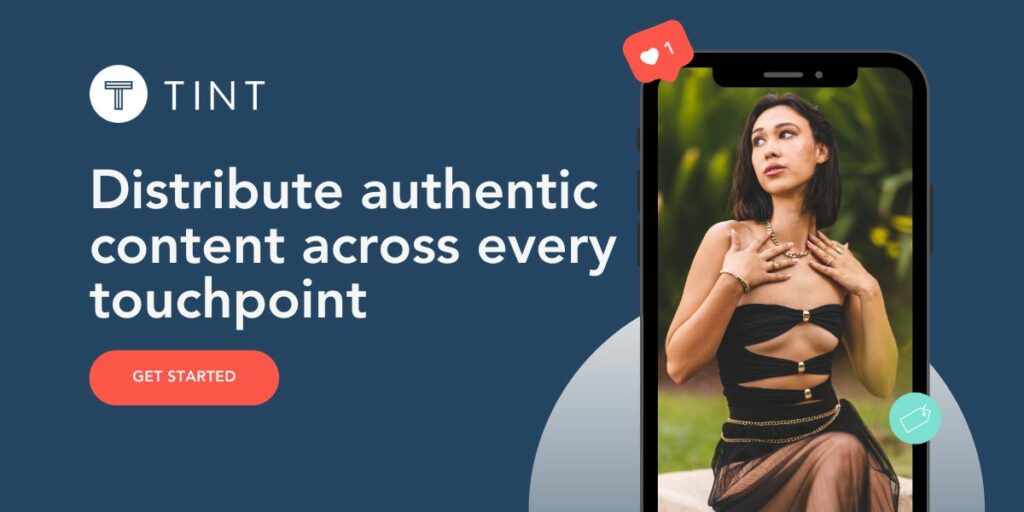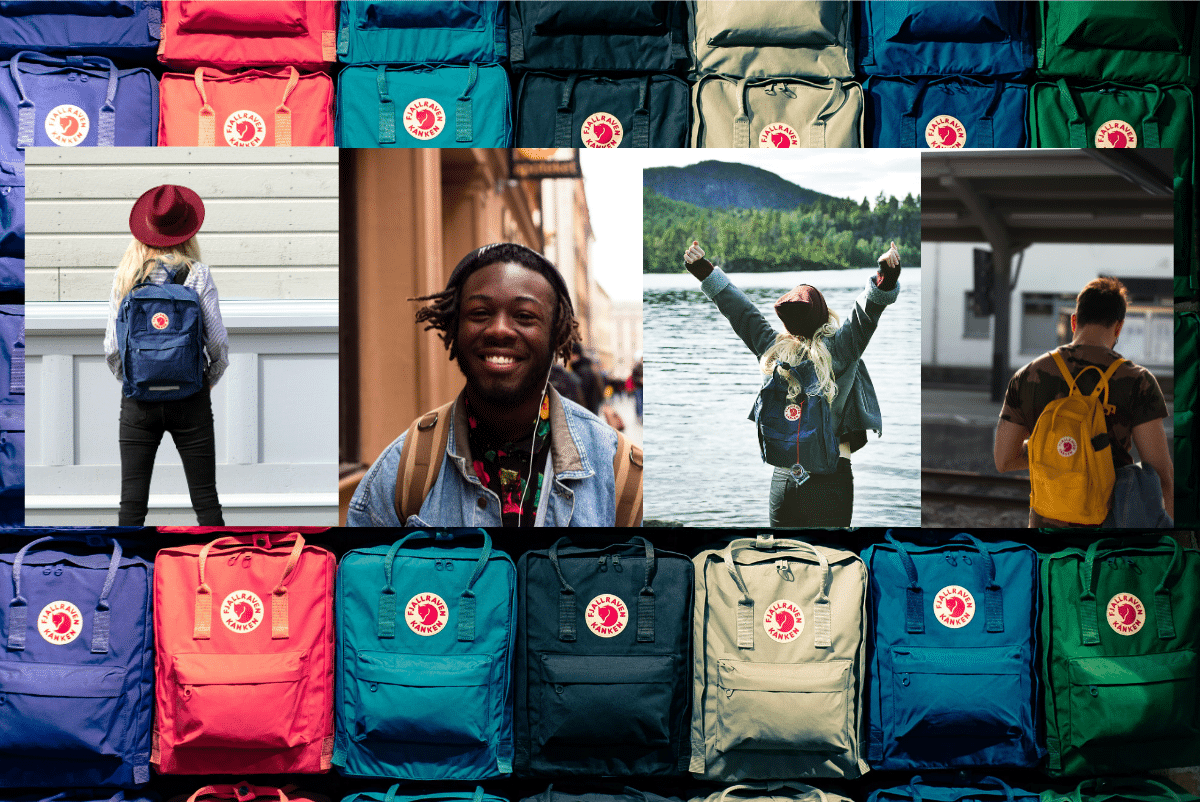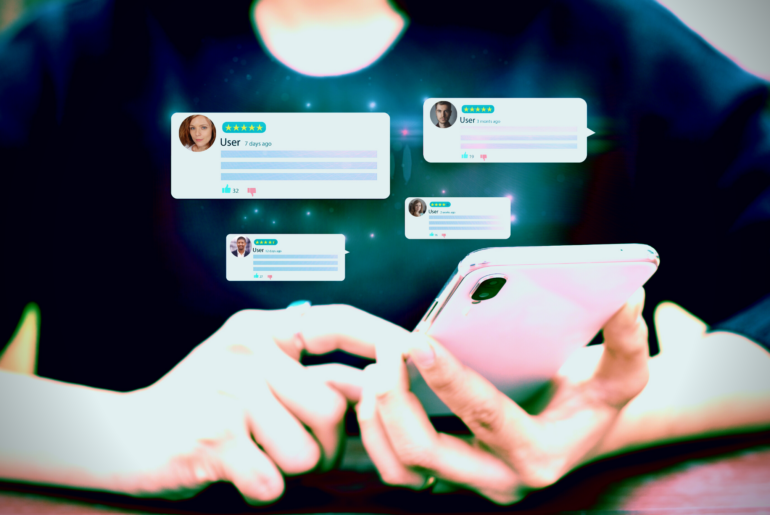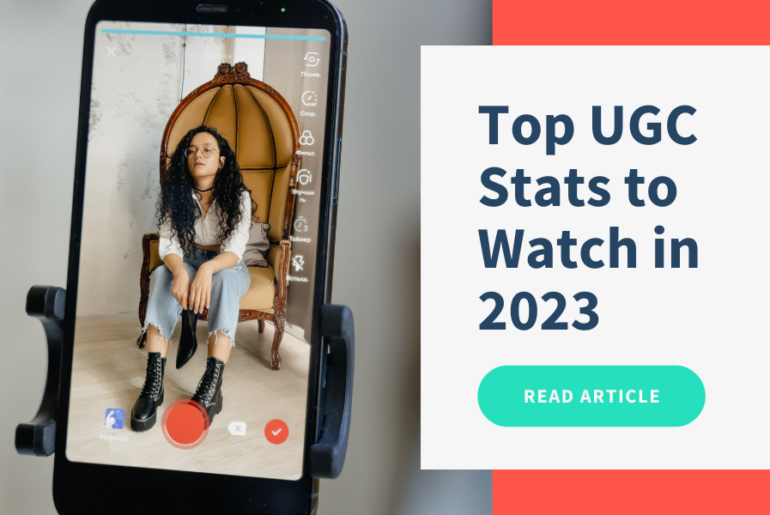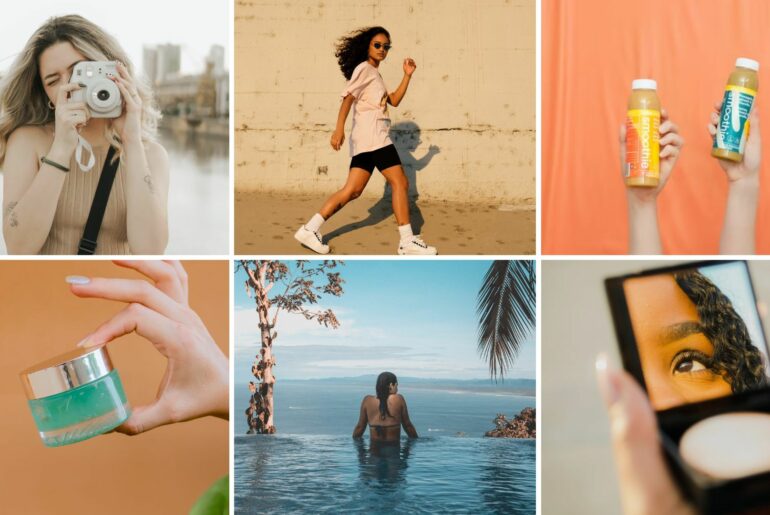User-generated content, or UGC for short, is any content that has been created, published, and/or submitted by users of a brand. In many cases, it’s the most effective content for brands. Often, contributors are unpaid fans who promote a brand instead of the brand promoting itself.
What Does User-Generated Content (UGC) Mean?
What does UGC stand for? User-generated content can be content of any type and usually comes in the form of images, videos, social media posts, reviews, or testimonials.
When Coca-Cola brought out their personalized coke bottles, the world went crazy for them. Dubbed the “Share a Coke” campaign, this personalization craze took off all over the world with bottles named after people in every different destination.
To keep the momentum going, customers were asked to share pictures of themselves enjoying a drink with their personalized coke bottle on social media channels. The result? Coca-Cola’s customers stepped into the role of the advertiser.
This wasn’t just a one-off campaign or a fancy fluke.
Instead, it is one of the thousands of UGC campaigns that brought the business it promoted millions of revenue and a whole new image.
“The next wave of the Web is going to be user-generated content.” –
John Doerr, Venture Capitalist.
But what is UGC (User-Generated Content)?
User-Generated Content is defined as any type of content that has been created and put out there by contributors, users, visitors, guests, customers, brand fans, even creators. UGC can refer to pictures, videos, reviews, testimonials, tweets, blog posts, and everything in between and is the act of users promoting a brand rather than the brand itself.
So, UGC sounds like another one of those marketing buzzwords, right? In fact, it isn’t a fad at all. It’s been burning brightly for a while (well, a while for the fast-paced world of the internet).
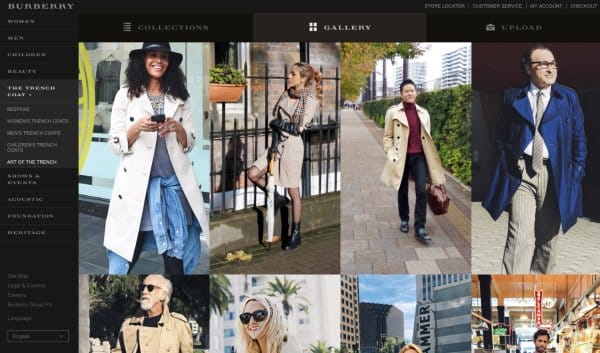
Let’s take it back a few years for a moment to Burberry’s Art of the Trench UGC campaign. At that point, brands were adopting the idea of their fans promoting their business – because word-of-mouth referrals are the best kind of referrals, even in the digital age.
Burberry asked its loyal fans to upload pictures of themselves and their friends wearing the brand’s iconic trench coat. All Burberry had to do was curate the best submissions, which they showcased on a dedicated microsite and their Facebook page.
When you consider that 86% of millennials (Trend), and 68% of social media users between the ages of 18 and 24 take into account information shared on social media when they make a purchasing decision (eMarketer), it’s easy to see why UGC is so powerful.
What makes User-Generated Content Successful (and Why You Shouldn’t Ignore it)
Obviously, UGC campaigns have been a constant player in the marketing world because they are so successful (see Share a Coke campaign).
But why are they so successful? Why are brands turning to their audiences to share their products instead of crafting their own ads?
UGC Puts Customers Front and Center
Customer-orientated businesses are on the rise because companies constantly have to keep up with the changing trends of their audiences. In this fast-paced, digitally-run world, attention spans can be snapped away with the click of a finger. If brands aren’t catering solely to their customers, their customers will simply find another brand that is.
Online users are becoming increasingly savvy in knowing which companies are using slimy marketing tactics, and which ones are being authentic and transparent.
People Don’t Trust Marketers, They Trust Real People
This brings us to the next point. In the past ten years, the idea of the sleazy marketer has risen to unprecedented heights. The average Joe in the street is no longer impressed by pushy sales tactics.
Instead, they crave stories, they crave connection, and they crave interaction with other humans, with real people (a byproduct, perhaps, of the increasing amount of time we spend in front of a computer screen?).
In reality, we’ve been buying into UGC for centuries, but there are now social media platforms to make it more accessible across the globe. And, when you discover that a whopping 92% of people are more likely to trust a recommendation from another person over branded content, it’s clear to see how far the trust between people and marketers has stretched.
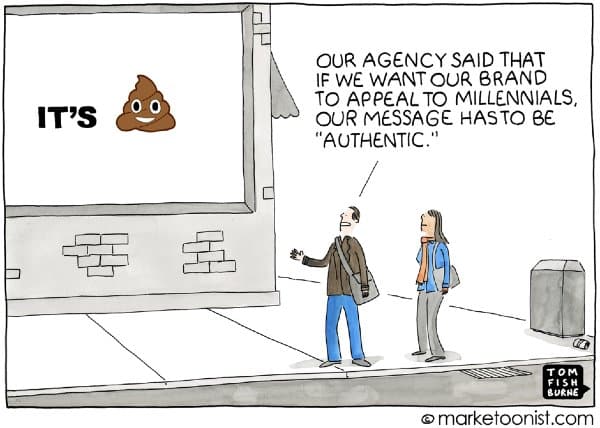
User-Generated Content is Authentic
In a study run by Cohn & Wolfe, 63% of consumers said they would rather buy from a company they consider to be authentic over a competitor.
Authenticity is so important in today’s online world. Customers are no longer passive consumers led by TV commercials and billboards. Instead, they’re active choosers of their own fate and want a say in who they do and don’t buy from, even ambassadors for marketing brands they care about.
But how do they choose who to buy from? They opt for brands that have the same values as them, brands that they can connect with on a human level, and brands that “get them.”
UGC Creates Community
UGC brings audiences together. Instead of it being an “us” against “them” situation, where brands are constantly trying to win consumers over, UGC brings everyone together in one big happy family.
People like to feel a part of something. In a 1986 theory penned by MacMillan and Chavis, there were four things that encouraged people to feel like part of a community.
- Membership
- Influence
- Integration and fulfillment of needs
- Shared emotional connection
Points 2 and 4 are of particular interest to UGC. Influence has to work both ways – members also have to feel like they have influence over the community, an element that UGC puts on the table.
Shared emotional connection is pushed through UGC, too. MacMillan and Chavis stated that healthy communities have a story, and this is what brings them together.
UGC is Cost Effective
UGC is all about the users creating content. In most cases, they’re unpaid and do it for a number of reasons, whether it’s to share their experience, build a connection with like-minded people, or have a chance of winning something.
This, obviously, is considerably cheaper than forking out thousands – or even millions – for prime-time TV commercials and Times Square billboards.
The beauty of UGC is that the users run the show, while marketers don’t have to empty their pockets on campaigns that may or may not perform well.
UGC ROI is High
According to ComScore, brand engagements rise by 28% when consumers are exposed to a mixture of professional marketing content and user-generated content.
Take the Starbucks’ White Cup Contest as an example. Customers were encouraged to doodle all over their white Starbucks cups and post their images as entries for a competition to find a template for a limited edition Starbucks cup.
Nearly 4,000 customers submitted entries in just three weeks, showing that people were ready and willing to engage with the brand.
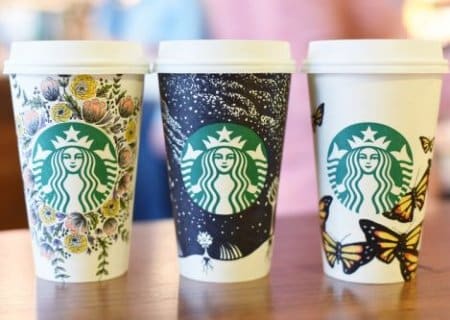
Where Does User-Generated Content (UGC) Come From?
Knowing that user-generated content can be used from the very start of your marketing strategy to the end (even after your highest tier conversion), the question becomes: where and how do I get UGC?
Since UGC comes from your fans and customers, it’s a matter of finding their promotional content and organizing it to find the best content based on what you need it for. You can either find UGC (usually using social media) or create a direct submission where customers can send content to your brand during contests and campaigns.
TINT’s User-generated content platform can collect, organize, and find the highest quality UGC to use in your upcoming campaigns. Discover all the UGC available and easily find quality content to use in certain parts of your marketing funnel or differing campaigns. Without a platform like TINT, finding UGC can take hours and your cyberstalking for customer content isn’t promised to end in results. You might be able to find some content based on brand-wide hashtags, but you’ll end up leaving a lot of UGC on the table that isn’t explicitly tagged with your branding.
Three ways to get customers to create user-generated content:
- Motivate customers to create UGC during certain parts of the buying journey
- Create beautiful experiences, physical spaces, and unboxing events that people are more likely to share
- Ask customers to create UGC in return for a prize
Let’s take a look at these to understand when to use them.
Motivate Customers To Create UGC, or “Customer Generated Content”
Think of customer generated content as the part of your marketing strategy that you always want to be turned on. You always want customers to promote your products as they receive them and use them. The key is making sure that you’re helping your customers create UGC.
More than half of consumers (50%) wish that brands would tell them what type of content to create and share. Take a look at the most exciting parts of the buying journey and create a call to action for your customers to take UGC. Here’s where to start:
- Immediately after purchase
- When they receive their product/service
- After they get the results from their product/service
Motivate customers to create UGC by giving them an easy tweet on Instagram Story to share after they’ve made a purchase. For eCommerce brands, add a note with the shipped product that tells customers to share their unboxing experience – and send them an email a few days (or weeks) after receiving their product asking them to share their feedback on social.
These are just some examples of how you can get customers to create UGC, but depending on your brand you can come up with the specific strategies that work best for your customer persona.
TINT can help you find and request rights to content your users and customers are creating about your brand.
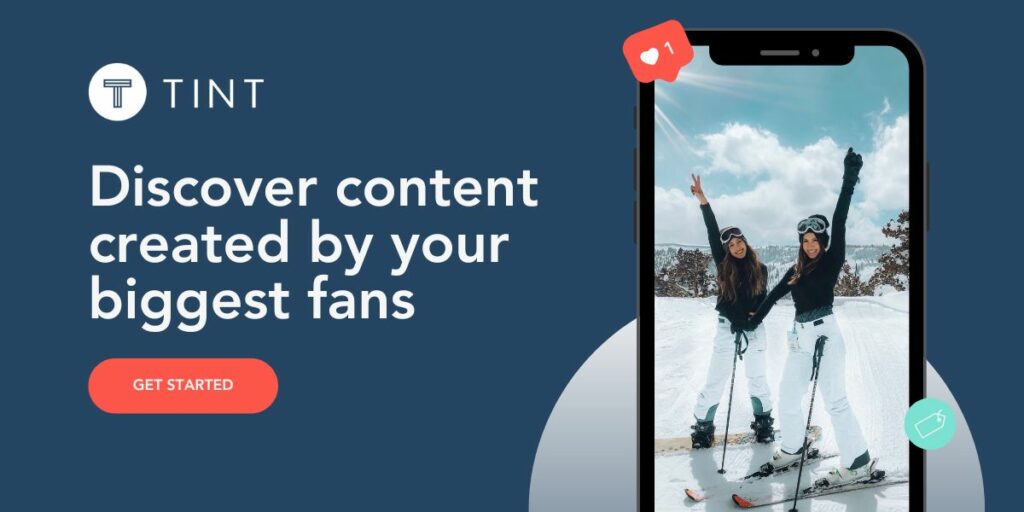
Ask Customers To Create UGC In Return for a Prize
This is an important part of your UGC marketing strategy. When you run UGC contests, you’ll be in full swing asking customers to share their content in a specific way with the hopes of winning a special prize from your brand.
For example, Chipotle created a UGC campaign on Tiktok with a prize of 1 year of free Chipotle. They asked their audience to participate by making a TikTok video explaining why they should win the free year of Chipotle with the hashtag #ChipotleSponsorMe.
This isn’t a campaign that runs every day—this is the type of campaign to run a few times a year to increase brand awareness through the UGC created by campaign participants. You can run prize campaigns simultaneously alongside your ongoing UGC strategy.
Where Does User-Generated Content (UGC) Fit Into Your Marketing Strategy?
UGC is truly omnichannel and can be used from top-of-funnel to bottom-of-funnel content. Brands use UGC to increase brand awareness and sales because it’s one of the few marketing materials that work well at each stage of the customer journey.
Forty-eight percent of customers claim user-generated content is a great method for them to discover new products and there’s a 29% increase in web conversions when websites featured user-generated content.
It’s these statistics that motivate brands like Coca-Cola, Burberry, and Starbucks to focus on user-generated content campaigns—the more they can get their customers to do the promoting for them, the higher their sales. Better yet, the less time and money they have to spend on advertising campaigns.
When you have customers creating content for you (that you can use in your content marketing strategy, social media strategy, email strategy, etc.), you don’t have to pay for huge product shoots and campaigns, and the teams necessary to help them run smoothly. Campaign costs take a steep downward turn and brands can allocate those resources towards getting their UGC seen by a larger audience that wouldn’t have been available if they’d had to spend more than half of their marketing budget on campaign shoots and teams.
What about content generated by employees?
User-generated content isn’t just for B2C brands—B2B brands also see success with UGC in their marketing strategies. We can see this in the personal brand revolution that has taken over content marketing. Employee-shared content gets 8 times more engagement than content shared by brands.
Employees may get up to 10 times more followers than a brand’s corporate account and get more organic social engagement. These are the numbers that turn B2B marketers’ heads—customers want to see the faces behind the brand, including customers or employees.
What about content generated by UGC creators?
Aside from improving brand awareness, engagement, and sales, user-generated content also fits in post-conversion. After a happy customer has made their purchase, getting featured on a brand’s Instagram feed or retweeted builds the post-purchase relationship between the brand and the customer. It’s this interaction that furthers future customer loyalty, as they get to interact with the brands they love so much (instead of admiring them from afar).
When you open up your Instagram feed to UGC photos or see brands retweeting their customer’s tweets—it’s not an accident. It’s a strategic move to increase brand awareness, trust, and sales while decreasing how much money needs to be spent on content creation.
After all, everyone is an influencer.
How User-Generated Content (UGC) Changes Influencer Marketing
UGC utilizes influencer marketing to create micro-awareness moments for your brand that compound to increase conversions. When we say “influencer marketing,” we don’t mean spending your entire marketing budget on getting a Kardashian to promote your brand. The focus isn’t necessarily on huge mega-stars—it’s on the nano and micro-influencers that have engaged audiences. These are the average people deemed more trustworthy than celebrities turned brand ambassadors.
A nano-influencer can be a student with 1,000 Instagram followers that are only their friends, family, and acquaintances. When this student applies to a university and gets in, they become an influencer when they post an Instagram story holding their acceptance letter.
That Instagram story is user-generated content. All influencers technically create UGC and everyone that creates UGC is technically an influencer. With seventy percent of consumers trusting online peer reviews and recommendations more than professional content and copy—the use of influencer marketing is becoming less of an option and more of a necessity.
For example, when Delta promotes a happy customer’s tweets talking about their new safety regulations while flying during COVID-19, consumers are keener to see the customer talk about it than Delta itself.
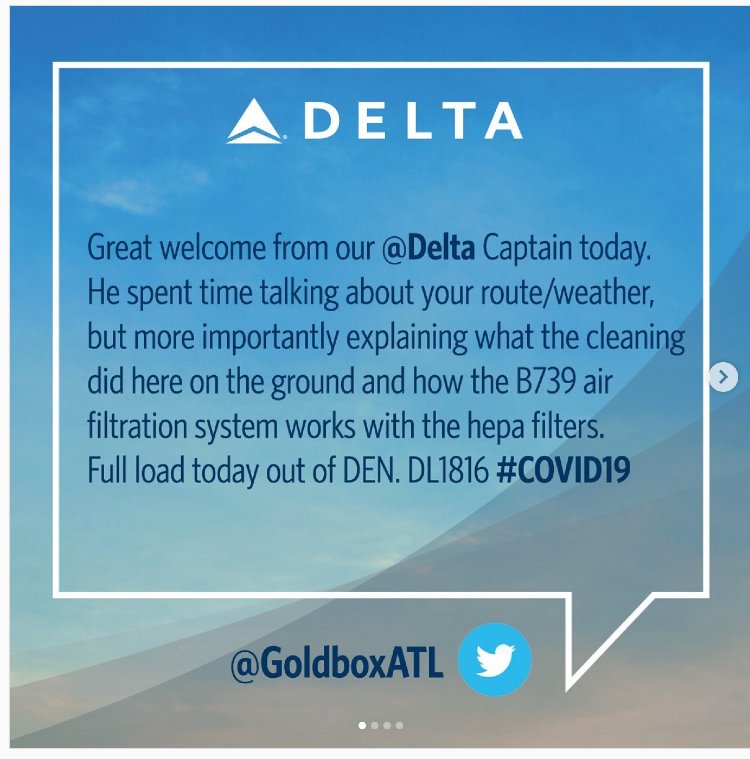
You can also use professional influencers to promote your products. These are people with influence in a specific niche and a highly engaged audience (7% engagement minimum).
A micro-influencer has 10,000 to 100,000 followers and has most likely worked with brands before. The benefit of working with these influencers is their expertise in the space. They’ve built an engaged audience and they’re able to leverage their social platforms as a channel for advertising. It’s their job to showcase new, relevant products to their audience that they would be interested in too. Using micro-influencers, you can create more brand awareness for your products, conversions, and user-generated content from the influencer that you can continue to use in marketing materials in the future.
A nano-influencer has 10,000 followers or less. They’re generally a tastemaker, a community expert, or a social butterfly, and that’s what has garnered them an audience. The pro of working with nano-influencers is that they might not consider themselves an influencer. They might just feel like a normal person who happens to have grown a decent social media following, and this means their profile is less of a channel for advertisement and more of a channel for entertainment. With nano-influencers, even though their following might not be that high, they tend to have higher engagement than micro-influencers or mega-influencers—which can result in more conversions.
It’s these influencers that brands can use, getting the influencer to review their products instead of creating a fancy promotional video that does it themselves. Seventy percent of consumers trust online peer reviews and recommendations more than professional content and copy.
Types of User-Generated Content (UGC)
With an understanding of where UGC fits into your marketing strategy and where it comes from—it’s time to look at the types of UGC available. There are three types of content that you want to focus on as you increase brand awareness and sales:
- Visual UGC (Photos and Videos)
- Testimonials and Comments
- Reviews
Let’s take a look at these three types of UGC.
Visual UGC (Photos and Videos)
Visual content is the most common type of UGC and also the most engaging. For example, when Chipotle asked their customers to create TikTok videos explaining why their customers should be sponsored by them, they created a lot of engagement and a lot of visual content.
When a customer shares a photo or video of their new product on social channels, they’re creating visual UGC. Similarly, when a guest takes a photo of the sunset from the pool at the hotel they’re staying at, that’s visual content, visual UGC.
With TINT, brands are able to collect all of the UGC created by happy customers and use it in the future as needed.
Testimonials and Comments UGC
Testimonials and comments are generally going to come post-purchase when the user has received their product or the benefits of the product. For example, a class or program is going to want to get as many UGC videos of their happy students as possible so they can continue to promote their program.
Users with happy customers on comment-friendly platforms (like Twitter or Facebook), can use customer comments in their marketing materials. The key to using testimonials and comments is to ensure that you’re sourcing the most helpful for your future and potential customers.
Reviews UGC
Reviews are left on product pages or business pages and are a huge part of product success. Seventy percent of consumers will consider UGC reviews or ratings before making a purchasing decision. Reviews are best left below products on their product page, where somebody at the bottom of the funnel can read the review so they can feel knowledgeable and ready to make the purchase.
You can also use reviews in your top-of-funnel strategies to create awareness for the quality of your products or services, but ensure all relevant reviews make their way as close to the buy button as possible.
So what’s the best type of UGC to ask your users for?
The answer is all three. You always want an incoming stream of new user-generated content that can be used in future marketing materials. Since those materials will require different types of UGC—having plenty of options for each type of UGC will be massively beneficial to all future campaigns.
User-Generated Content (UGC) Best Practices
Just like having all three types of UGC on hand is best practice, there are a few more best practices to be aware of as you start your UGC strategy.
Choose the most effective social network for your brand
Brands don’t need to create content on every single platform available to them. Instead, they need to focus on the platforms where their customers can be found.
For example, a clothing boutique doesn’t necessarily need to put its time and resources towards having a Twitter presence—that time is better allocated towards Instagram.
You don’t need to be everywhere. The best practice for choosing the best channels for your brand is to go with the obvious channel first and prioritize it. Then, add in other channels as your time and resources are able to prioritize secondary channels. Give each channel set metrics it needs to pass to be deemed successful. If it passes them, then continue growing on that channel. If it doesn’t, then look for other channels to test your content on.
Use different types of UGC on specific channels
Each type of UGC is going to serve a purpose in specific parts of your marketing strategy. For example, a UGC photo of a customer enjoying their stay at your hotel is going to work great on your Instagram and website pages, but a review is going to be ideal under your booking or product pages.
The key to a successful UGC strategy is figuring out what platform each type of UGC is going to work best on. Generally, you can assume that the platform the UGC came from is a good platform to continue to use. For example, if you get an Instagram video from a happy customer—with the right legal permission you can use that video on your Instagram feed.
With that said, the highest use case for UGC is to incorporate beyond the original platform and use it on your website, screens, email, other social media platforms, and even in print. UGC works well because it’s not company created, so as your marketing team works with UGC and adapts it to other platforms (email, websites, screens, events, etc.), they can leverage that same authenticity that made it work so well in the first place.
Use UGC in content marketing campaigns
While UGC can be used across all of your marketing campaigns (traditional and digital), there’s a big opportunity to leverage it in your content marketing campaigns. This is because UGC is content. All you need to do is keep repurposing it so that it can be seen by a larger audience and increase your brand awareness.
This is where TINT becomes really useful. Instead of having to find UGC and sift through to find the highest quality—you can use TINT to have all of that work done for you. As you, or your marketing team, pull UGC to use in your content marketing campaigns you’ll be able to find exactly what you need.
When you use UGC in your content marketing strategy, don’t forget that each piece of UGC can be used for a different purpose. One customer might have done a great job of creating UGC that’s perfect for top-of-funnel awareness, while another customer has the perfect video for bottom-of-funnel conversions. Figure out what pieces of UGC fit into specific parts of your funnel so you can make sure to use them at the right time.
User-Generated Content Marketing vs Traditional Marketing
Consumers are considerably less passive than they used to be when it comes to advertising. They’re now more active in the decisions they make, who they “social listen” to, and who they choose to buy from and engage with.
These days, buying traditional ads both on external media and online is a competitive game (and, even if you pull out the big bucks, you still might not catch the attention of your customers).
Add that to the fact that consumers are actively choosing to bypass ads (take pay-to-play streaming platforms like Netflix and the rise of ad blockers) and are more likely to click through to a site if they see a friend recommend it, and you have a solid argument for UGC to augment traditional marketing efforts.
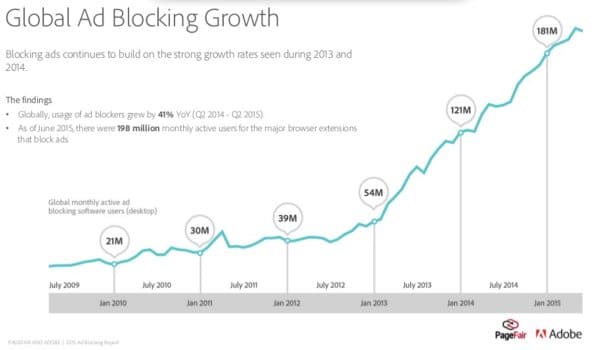
UGC works as social proof, too. One study shows that 79% of consumers admitted to trusting online reviews as much as in-person recommendations. That’s a huge metric.
Think for a moment about the ALS Association Ice Bucket Challenge. The charity challenge went viral for a few months, increasing awareness of the ALS Association (which not many people knew about beforehand) and bagging the company $100 million in donations. No small feat.
However, it’s also important to acknowledge the risks of UGC marketing. The most critical of which is properly managing the legal rights to photos. A couple of high-profile cases demonstrate the potential damage that mismanagement of UGC can cause to both the bottom line and to a brand’s image.
The Best User-Generated Content Examples from Brands
Let’s pull this all together by diving into some brilliant UGC campaigns.
Lululemon #thesweatlife UGC Campaign
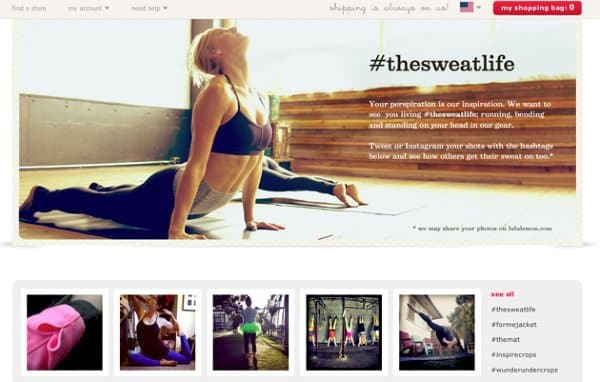
Yoga clothing brand Lululemon wanted to bring their audience together and create a community around their business. They came up with #thesweatlife campaign, which encouraged their customers to post pictures of themselves in Lululemon gear on Instagram.
“We created the program as a way to connect with our guests and showcase how they are authentically sweating in our product offline,” says Lululemon brand manager Lesia Dallimore. “We see it as a unique way to bring their offline experiences into our online community.”
In the first couple of months, the brand notched up over 7,000 photos of its customers (or “brand ambassadors”) on Instagram and Twitter, and the unique #sweatlife gallery which was created especially for the campaign received more than 40,000 unique visitors.
Chipotle Cultivate Festival UGC Social Wall
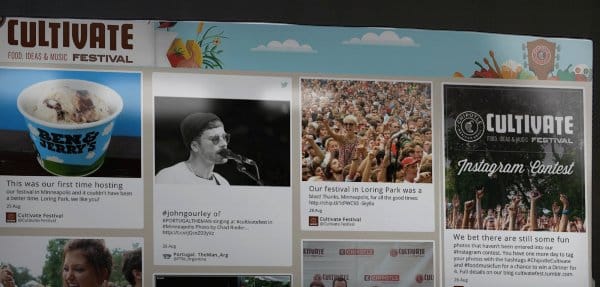
Chipotle’s branded festival used UGC to bring its crowds together and promote the different elements of the brand and the festival.
They pulled together social shares, images, and videos onto a single page, where visitors to the festival could scroll through and relive their memories after the festival had ended.
Throughout the weekend of the Chipotle Cultivate Festival, which took place in San Francisco, the brand racked up more than 1,200 social posts and a whopping 3 million impressions. What’s more, over 37.5% of the visitors scrolled through the TINT social wall to load more content from the weekend.
Belkin Lego iPhone Cases UGC Campaign
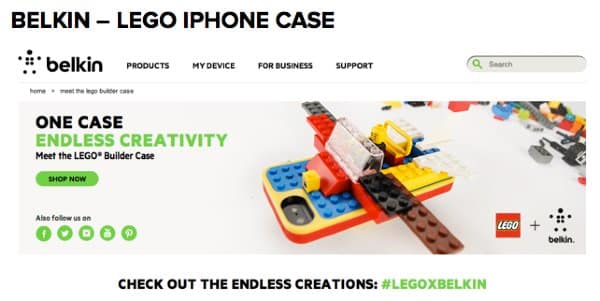
Belkin ran a UGC marketing campaign that included people’s favorite gadget – the iPhone. Partnering up with Lego, they asked customers to create cases for their phones using customizable Lego blocks.
They then posted the images onto Instagram using the hashtag #LEGOxBelkin. This is the perfect example of customers doing the selling for the brand because this simple but effective marketing method showed potential buyers just how cool, diverse, and trendy Belkin cases could be in an organic and authentic way.
NASDAQ Omnichannel UGC
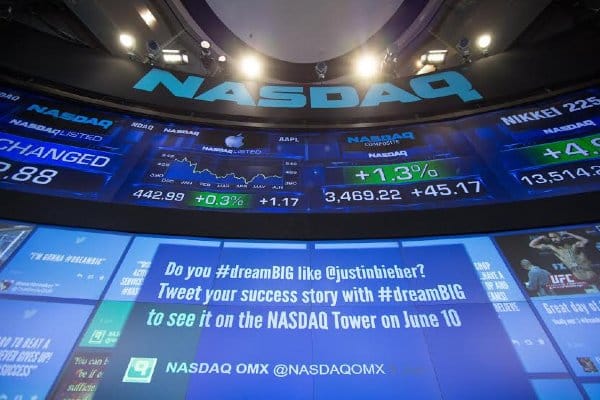
NASDAQ is a strong supporter of UGC content, using it across many of its brands including Virgin America, ETSY, Zebra, and Biogen. They use it to accumulate and bring together social content at social events and other important calendar dates.
NASDAQ uses TINT across a number of different channels when they’re running a big event, meaning the social shares get seen on large screens in Times Square and TV monitors all over the world.
“What makes TINT the best is it allows us to easily approve content on the go from the app,” says the Director of Integrated Marketing at NASDAQ, Joshua Machiz.
And that’s another reason UGC is so important. In such a fast-paced, constantly changing online landscape, content needs to be quick and on-trend. Instead of spending months and millions coming up with an advertising campaign that might be out of date by the time it finally airs, UGC marketing allows brands to stay on the ball and stay current with their customers.
Brands can constantly be in touch with their audience, which means they stay at the forefront of their minds.
The power of UGC is easy to see, and there’s no doubt that we’ll be seeing much, much more of it in the coming years as brands tap into the power of their audiences and take a step back from pushy sales tactics.
Want to learn more about how to maximize your ROI with user-generated content? Get a free strategy session with our team here.
